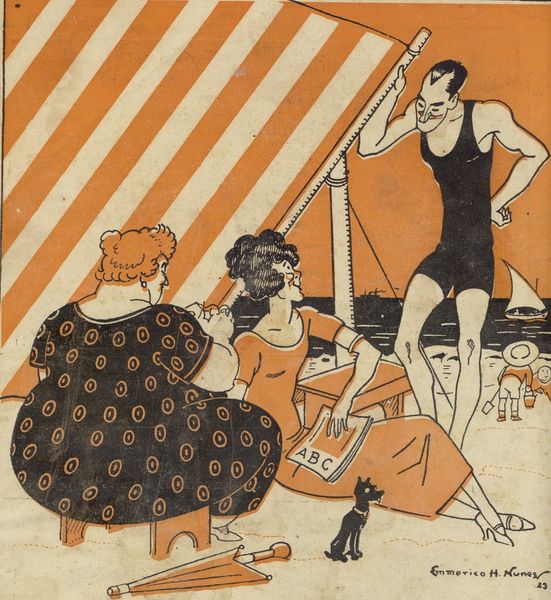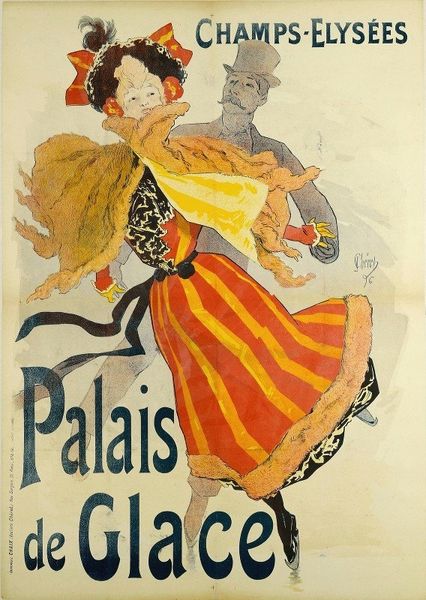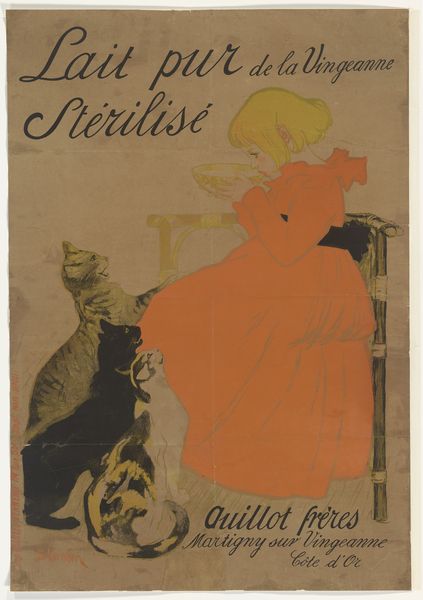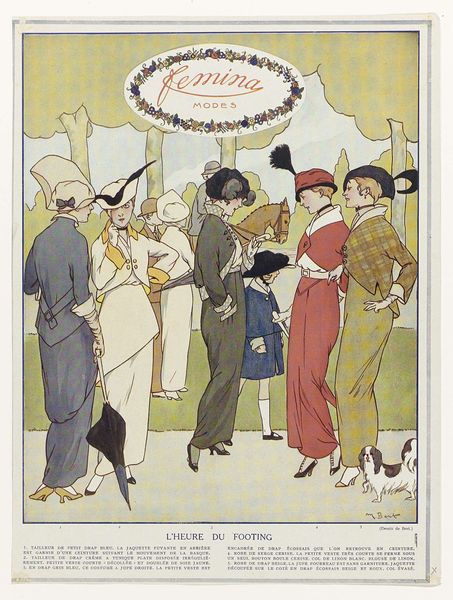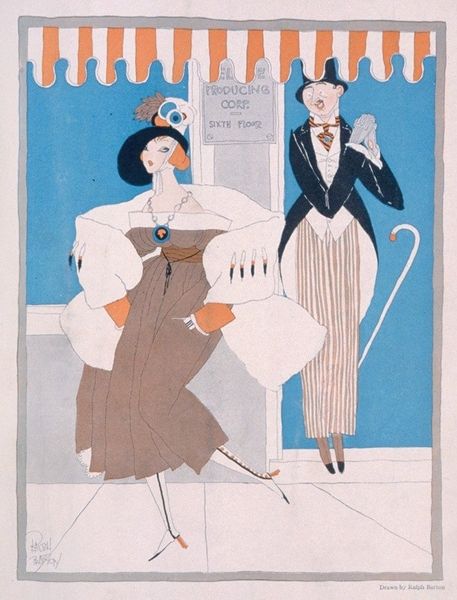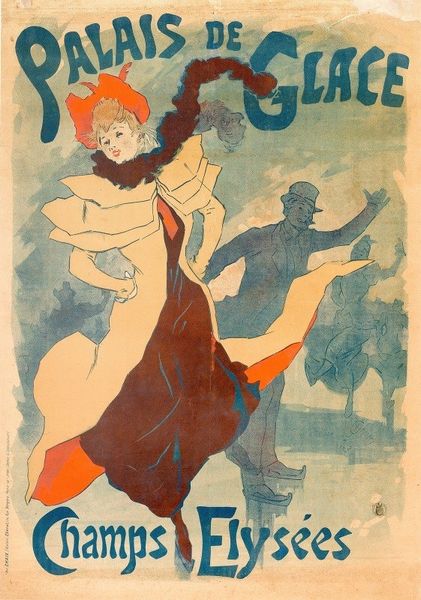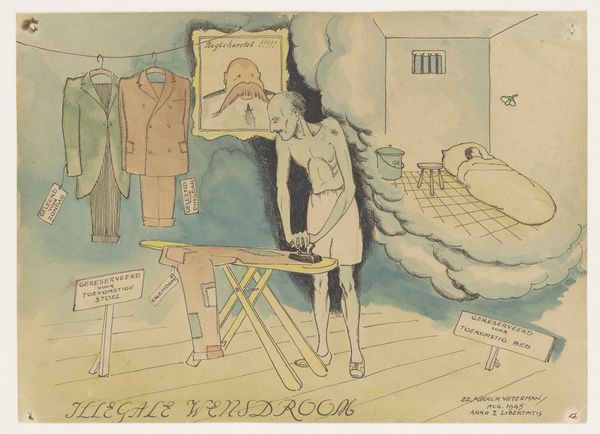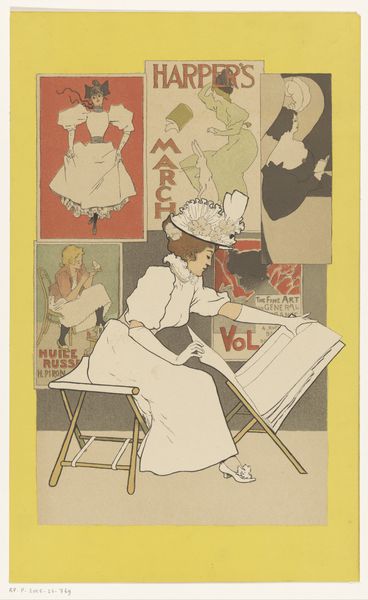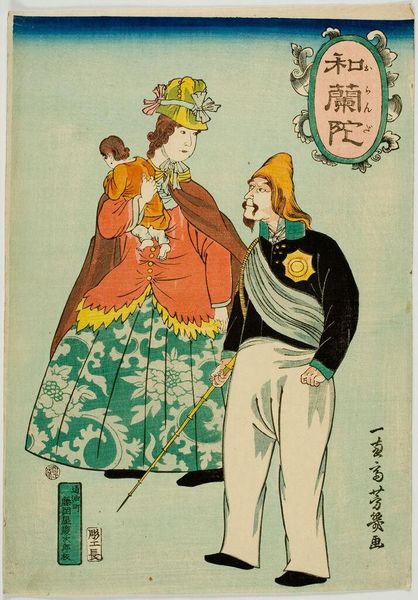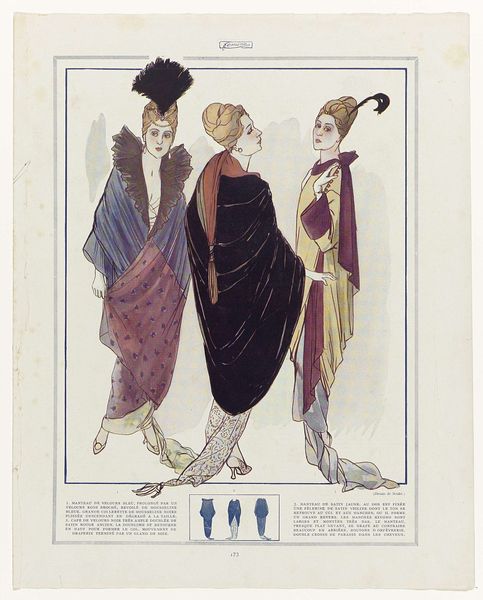
Fotografie Strauss Rotterdam. Grootste en mooiste inrichting. Bekend billijke prijzen. Artistieke afwerking 1914
0:00
0:00
graphic-art, photography, poster
#
portrait
#
graphic-art
#
art-nouveau
#
photography
#
poster
Dimensions: height 1100 mm, width 805 mm
Copyright: Rijks Museum: Open Domain
Curator: Immediately, I'm drawn to the bold typography; the words "Fotografie Strauss Rotterdam" announce themselves with an assured, Art Nouveau flourish. Editor: And for me, it’s that ghostly female figure on the left – draped in pale tones and ruffles. There's something ethereal and almost haunting about her presence against that saturated blue background. A specter of ideal beauty positioned alongside the tangible mechanics of the photographic process. Curator: This is a 1914 advertisement poster created by Arnold van Roessel to promote Fotografie Strauss, a photography studio. Note the prominent display of the business' address and the emphatic slogan about artistic refinement, a direct promise about their photographic offerings. Editor: Let's not overlook the way this poster promotes gendered divisions of labor and class aspirations. Here the female form is explicitly presented as a prop, subjected to the camera's male gaze, which is signaled through that dapper red-jacketed photographer. Consider the limitations placed on women's agency and their transformation into consumable images at the turn of the century. Curator: I’m interested in this claim of “artistic afwerking” or “artistic finishing”. Notice the materiality of the design. The flat planes of color, the simplification of forms—these printing techniques allowed for mass production while also echoing fine art printmaking methods. It is straddling commerce and artistic ambition. Editor: Absolutely, and that tension makes it ripe for analysis! Van Roessel employs this blend of illustration and commercial advertising techniques to subtly normalize the dynamic. How might the photograph produced reinforce cultural norms? Where do we locate power within this context of portraiture? Curator: It’s easy to imagine the original poster wheat-pasted onto a building facade, jostling for attention amidst other advertisements. The scale, the color contrasts, these were essential components for grabbing the consumer's attention in the pre-digital age. Editor: Yes, understanding how that interaction played out within the historical, political landscape truly opens up its meaning. Curator: Reflecting on the poster’s composition and the implied labor necessary for its construction gives valuable insights. Editor: By understanding its multifaceted narrative—the gendered dynamics, artistic messaging, and sociohistorical backdrop—we can glean something new each time.
Comments
No comments
Be the first to comment and join the conversation on the ultimate creative platform.

